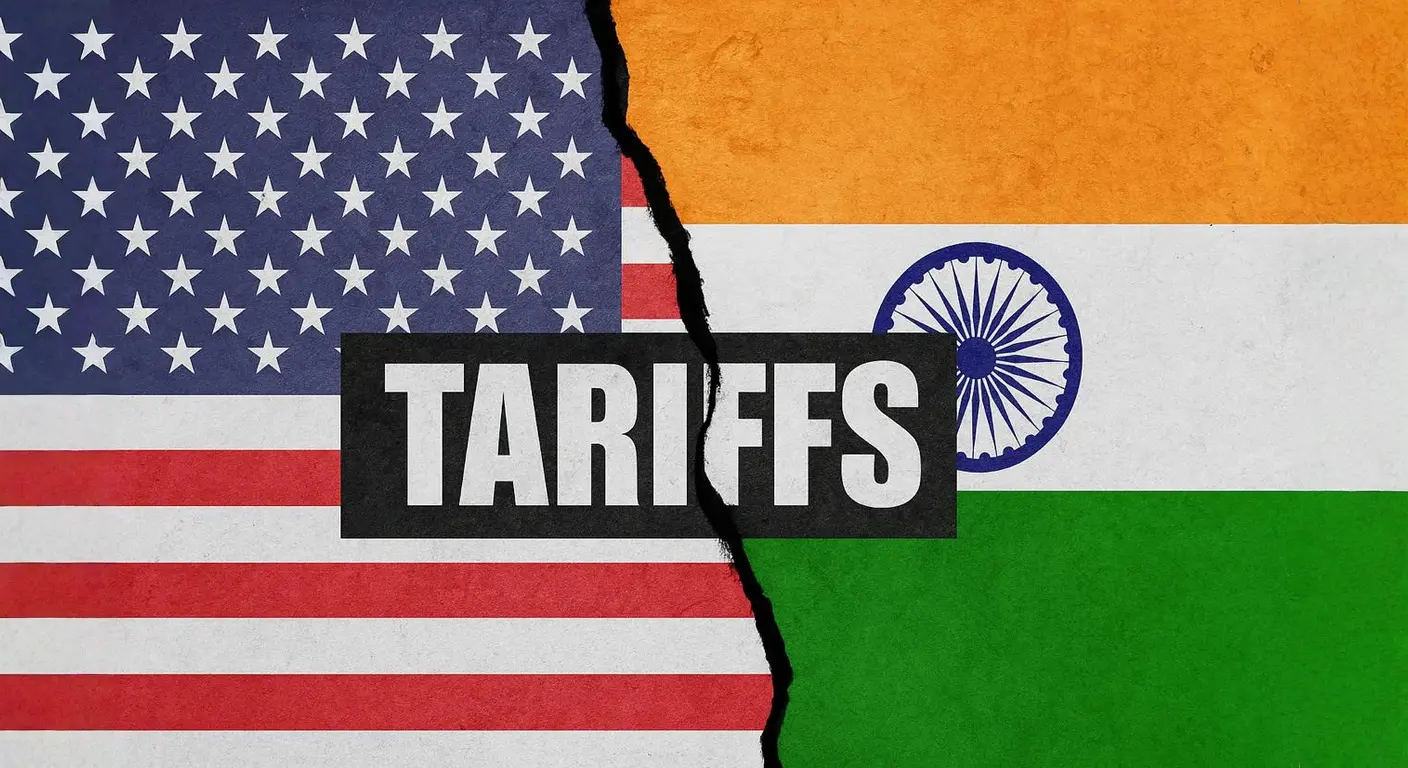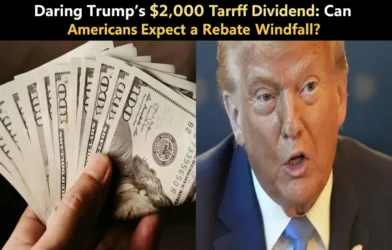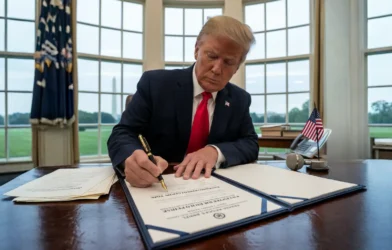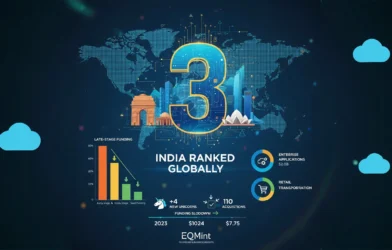India’s trade story in August 2025 is one of resilience mixed with uncertainty. Merchandise exports climbed 6.7% year-on-year to US$35.10 billion, even as imports contracted by 10.1% to US$61.59 billion. This helped narrow the trade deficit to US$26.49 billion, slightly below July’s US$27.35 billion. However, lingering tariff pressures in key export markets continue to cast a shadow on the outlook, raising questions about how long this momentum can be sustained.
When services are included, overall exports grew by 9.34% YoY — a performance that surprised analysts, given the disruptive impact of the 50% tariffs imposed by the U.S. in late August.
Why the Numbers Look Strong
Several short-term factors explain why India’s August export performance looked better than expected:
- Front-loading effect – Exporters rushed to complete shipments before the U.S. tariffs formally took effect on August 27, temporarily boosting export volumes.
- Sectoral insulation – Not all industries were directly hit. Information technology services, pharmaceuticals, and certain machinery segments remained largely unaffected, softening the headline impact.
- Currency advantage – The Indian rupee’s weakness during August made exports more competitive, improving pricing power in global markets.
These factors provided a temporary buffer — but the outlook for coming months is less certain.
The Tariff Shock Explained
The U.S. decision to levy tariffs of up to 50% on Indian goods came as part of Washington’s response to India’s continued oil imports from Russia. The duties apply to an estimated US$48.2 billion worth of Indian exports and target several labor-intensive sectors:
- Textiles
- Gems & jewellery
- Leather goods
- Seafood
- Footwear
These industries account for millions of jobs and are highly price-sensitive. The abrupt escalation in trade tensions has left exporters scrambling to protect overseas market share.
The Real Economic Impact
While August’s figures show strength, economists warn that the pain will likely surface in the coming quarters.
- GDP pressure – Extended tariff regimes could shave 0.5–0.8 percentage points off India’s GDP growth in FY26.
- Employment risks – Export-oriented clusters in Gujarat, Tamil Nadu, and coastal states may face layoffs if U.S. demand contracts sharply.
- Competitive erosion – Countries like Vietnam, Bangladesh, and Indonesia are well-positioned to seize market share in categories like garments and footwear, where margins are already thin.
In short, the resilience seen in August may not hold unless India rapidly adapts.
India’s Counter-Moves
Policymakers in New Delhi have responded with a multi-pronged strategy to cushion exporters from the tariff shock:
- Diversifying export markets – Renewed trade engagements with the EU, ASEAN, Africa, and Latin America aim to reduce overdependence on the U.S., which accounts for nearly 17% of India’s total exports.
- Relief packages under consideration – The government is weighing measures such as tax rebates, subsidized credit lines, and export-linked incentives to help vulnerable sectors remain competitive.
- Domestic capacity building – Efforts are underway to boost local manufacturing of intermediate goods and raw materials, reducing reliance on imports and strengthening supply chain resilience.
These steps signal India’s intent to use the crisis as a pivot point to expand global trade linkages beyond the U.S.
The Road Ahead
India’s August export figures underscore the adaptability of its exporters in the face of sudden policy shocks. However, sustaining this momentum will be far more difficult as the full force of tariffs plays out in September and beyond.
If diversification strategies succeed, India could mitigate the worst effects and even emerge stronger by deepening ties with new markets. Yet, in the short run, exporters — particularly in textiles, jewellery, and seafood — face significant headwinds.
The real challenge for India lies not in navigating a single month’s trade numbers but in reshaping its export ecosystem for long-term competitiveness. The resilience of August offers hope, but the coming quarters will reveal whether it was an outlier — or the beginning of a more adaptive export strategy.
References
- India Today – Exports climb despite 50% U.S. tariffs
- Times of India – Trade deficit narrows, exports rise in August
- The Guardian – Trump’s 50% tariff on India explained
- AP News – U.S. imposes 50% tariff on Indian exports
- Reuters – Tariffs hit Indian exporters
Disclaimer: This article is for informational purposes only. The views expressed are those of the author and do not necessarily represent the views of EqMint. EqMint assumes no liability for the information presented here.









